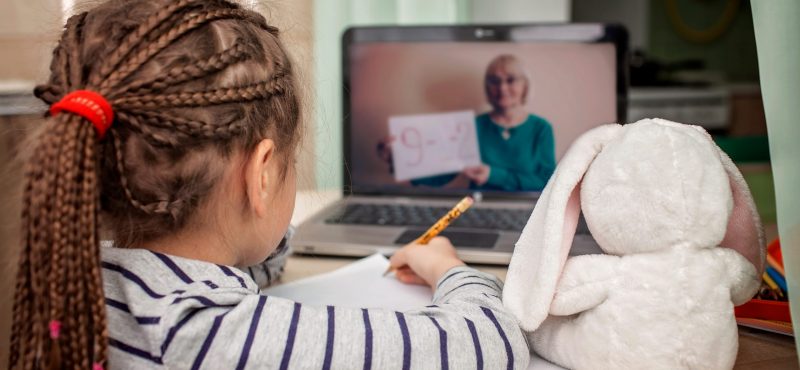America’s educators have gone to great lengths to make distance learning successful for all of their students. From dressing up like historical figures to coordinating virtual “field trips,” teachers rose to the challenge. But through it all, teachers, educators, and school district leaders recognized that a robust, reliable broadband connection was one of the most critical aspects of distance learning. As Teacher Appreciation Weeks wraps up, we’re celebrating the partnerships with teachers and schools across the country that helped broadband providers connect students in need with low- and no-cost broadband at home.
When Schools Shut Down, Educators and Providers Teamed Up
Moving classes entirely online was a significant endeavor for educators, especially when some students did not have internet access at home. As distance learning plans evolved, educators and broadband providers across the country collaborated to connect students and families in need. “With the move to distance learning, we absolutely didn’t want internet access to be a barrier,” said Matt O’Brien, executive director of technology for Waterloo Community Schools in Iowa. So O’Brien district partnered with their local broadband provider, Mediacom. “We were thankful that Mediacom offered us the ability to connect families under a school district account at the same discounted Connect2Compete rate.”
Hundreds of miles away, “Chicago Connected” was a breakthrough for students from low-income households. Thanks to the collaboration among Chicago Public Schools, local broadband providers, and philanthropy, thousands of students got the at-home connections they needed to continue learning from home — all at no cost to their families. “This initiative draws on many of Chicago’s strengths… [we’re] working in concert to build a more equitable and inclusive future for the city,” said Matthew Summy, Comcast Regional Vice President of External and Government Affairs.
Programs like these, part of the national K-12 Bridge to Broadband partnership between cable internet providers and school districts, have gone a long way to close the digital divide.
Broadband Connections Made a Difference at All Stages of Learning
In Houston, Texas, a Lone Star College faced a similar challenge when COVID-19 forced the community college to temporarily shut its doors. A partnership with Comcast proved to be a game-changer for Lone Star College students. “If students had to wait until a Starbucks or a library had to come back or wait for us to redesign our classrooms and buildings for social distancing, they would not have been able to finish [the semester.]” said Dr. Quentin Wright, President of Lone Star College, who led efforts with Comcast to connect hundreds of his students to low- and no-cost home broadband connections. “We’re so grateful to this partnership. It’s allowed [students] to stay in their homes, finish their work, complete their tests online, access tutoring services online, have the ability to ask the question if they need help. Now they have instant access. It changed everything for us.”
By Getting Out in the Community, Educators Helped Get Kids Online
Educators also played a key role in outreach for communities like Waterloo, Iowa. “Our staff went to extraordinary lengths to reach out to students and ensure that nobody slipped through the crack,” said Waterloo’s O’Brien. “It was amazing to hear stories of how our teachers, administrators, and support staff would do anything necessary to reach and support families—from joining social media to reaching out to dropping items at student doorsteps.” The “Chicago Connected” team took a similar approach, leveraging all partners to ensure qualifying families got connected. “With a shared commitment to the mission framework in place, we were able to spend a lot of time executing outreach strategies to get families connected,” Comcast’s Summy.
Distance Learning Goes Beyond
Educators and their partners also continued to innovate after the at-home connections were set up. They recognized that broadband, though critical, was just one piece of the distance learning puzzle.
Members of the Everyone Learns initiative in the State of Connecticut worked to expand the partnerships to include equipment like laptops and modems for student families. In Lafayette, Louisiana, educators partnered with Cox Communications to provide educational programming on the local government access cable channel, a resource that was particularly beneficial to students in hybrid learning models. “For 4-5 hours a day we had actual teachers teaching — the first hour for the youngest kids, and as it goes on there’s more advanced materials,” shared Sharon Truxillo, director of public relations, for Cox, Southeast Louisiana. “We had PE teachers involved to get kids active, art teachers to work on mobile skills, and more!”
Thanks to partnerships between school districts and broadband providers, and the grit and determination of educators across the country, millions of students gained the connectivity they needed to continue their education from home during the COVID-19 pandemic. “The tools for school are not only backpacks, notebooks,” said Cox’s Truxillo, “now the tools for school include the internet.”
